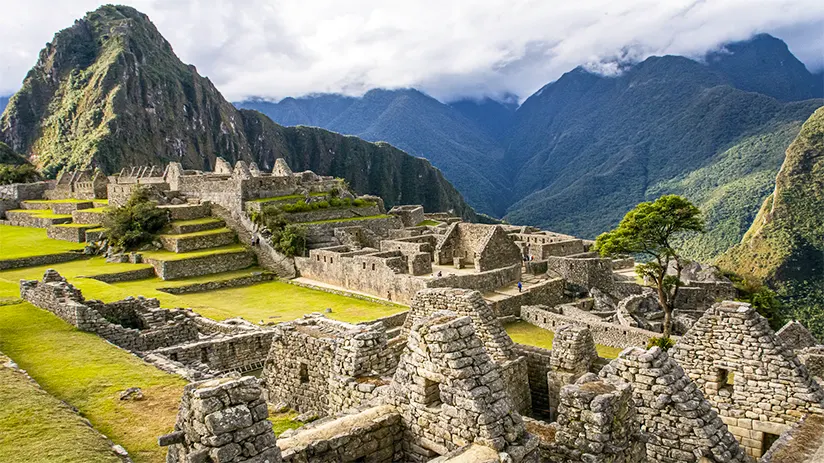In Machu Picchu, llamas are foreign like anyone. In addition, the true citadel owners are the spectacled bears. Moreover, the Machu Picchu Park office forbids overflying the Inca marvel. Without mentioning that the citadel is earthquake-proof.
And the Spanish conquerors knew its existence, but they never wanted to get to her. These are unknown Machu Picchu facts that will finally revealed to future visitors. But what do you know about this place?
There’s a lot to learn about this UNESCO World Heritage site, whether it’s for a vacation or a honeymoon in Machu Picchu. But there are other facts that are quite interesting to know. Like the UN named it a UNESCO World Heritage Site in 1982.
That is why, together with Machu Travel Peru, we will begin to tell you about some impressive Machu Picchu facts. You can learn these facts on a tour of the complex or at the amazing museum on-site. Know everything about this stunning, enchanting, magical place!
25 of the most impressive Machu Picchu facts.
1. Machu Picchu or “Old Mountain”
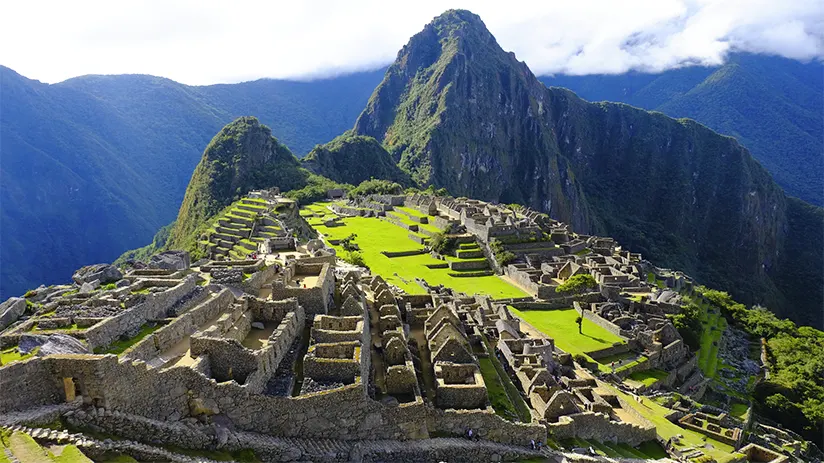
Although the Incas did not have a writing system, they did have a very widespread language in the Empire. The main language spoken was Quechua. The conquerors tried to introduce the Spanish language in the 16th century.
But despite this, many people still speak the Andean language. But there are no written records about the people who lived inside the citadel. Most archaeologists believe that Emperor Pachacuti had it built as royal property. However, many believe it was a retreat for some high-ranking religious leaders and scholars of the Empire.
Quechua is the source and origin of many place names, sites, and ruins around the country. First, Scholars described Machu Picchu as a fairly ancient Inca citadel. So, the Machu Picchu meaning is: “Old Peak” or “Old Mountain.”
In contrast, the Incas called Huayna Picchu “The new mountain”.
Machu Picchu refers to a solid structure with a conical shape and, in this case, is interpreted as a “mountain.” One of the most popular Machu Picchu facts.
2. However, this is not as old as we thought
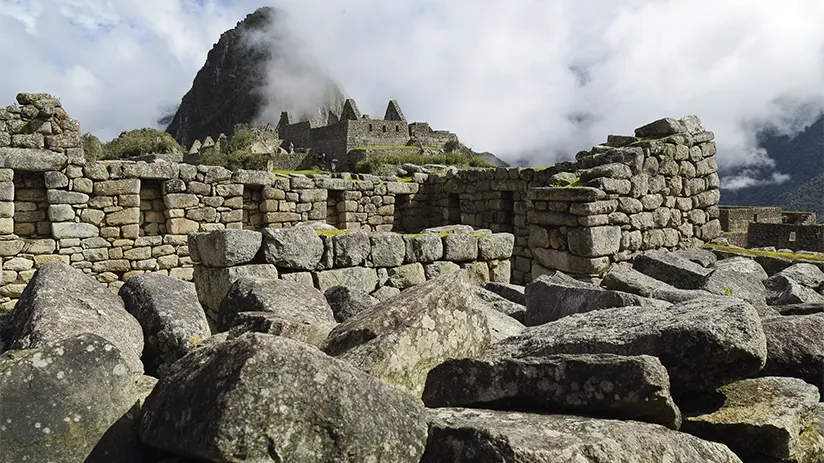
Despite its name meaning, Machu Picchu was built in 1400 B.C. In the Inca Pachacutec government. In other words, a millennium after the fall of the Roman Empire. And less than a century before the coming of the Spanish conquerors.
Of course, the same Inca Empire was a recent culture in comparison to other world cultures, like the Italian. Europe was already in the Renaissance era at the moment of Andean culture apogee. We can also mention the Chinese culture with its Ming dynasty.
3. Machu Picchu, colossal and carved stones perfectly matched
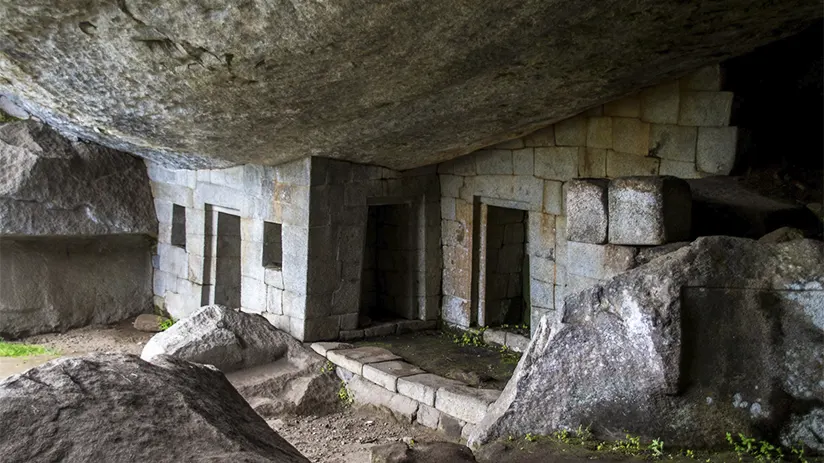
The majority of the complex’s stones weighed more than 50 tons. This is one of the Machu Picchu facts that surprise most scholars. The Incas carved many of the stone blocks without iron tools. But the most surprising fact is that many of these stones are so tight that it is impossible to fit anything between them.
And considering that some of these weighed heavily, it’s quite an architectural achievement. Furthermore, the bare hands of hundreds of men pushed these stones up the mountain. An example of this can be the Moon Temple in Huayna Picchu mountain. However, there is also evidence that the Incas chiseled them from the side of the mountain itself.
This is how the Incas built most of their archaeological sites.
4. The construction of the Inca citadel was complete without wheels
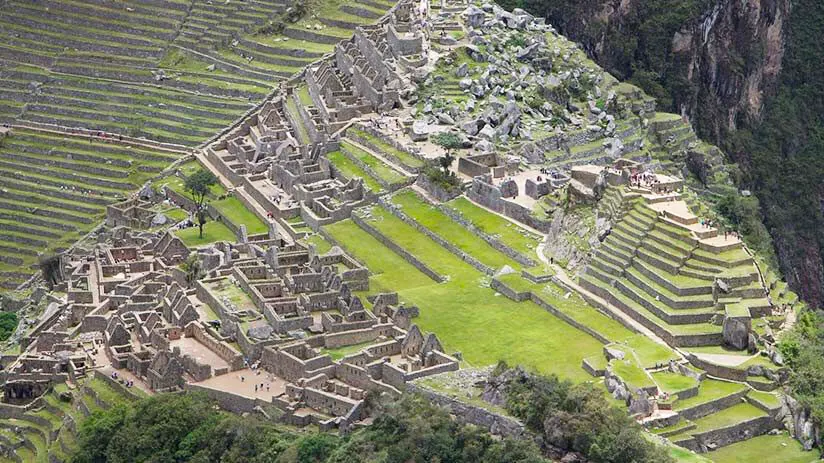
One of the most surprising Machu Picchu facts is that the Incas didn’t use wheels for its construction. Its construction process was similar to most Inca archaeological centers in the Sacred Valley. This is one of the most impressive facts of the complex.
If we are still wondering How to get to Machu Picchu? Knowing the method of stone transportation from quarries to Machu Picchu without the use of wheels is unbelievable.
Although many of the stones were heavy, scholars believe that hundreds of men had pushed them across the steep slope. Let us bear in mind that the Inca culture was against pack animals and iron tools. Making this construction even more fantastic if we take into account its difficulty.
Many of the stones even exceeded 50 tons. The construction looks more surprising if you take into account these facts.
Also, historians believe that hundreds of men pushed the stones up the mountain. However, the Incas also chiseled them from the mountainside. Note that the Inca people built the complex using a technique called Sillar. Without this method of construction, many of the buildings might have already collapsed long ago.
5. Machu Picchu served as a natural clock as well as an observatory
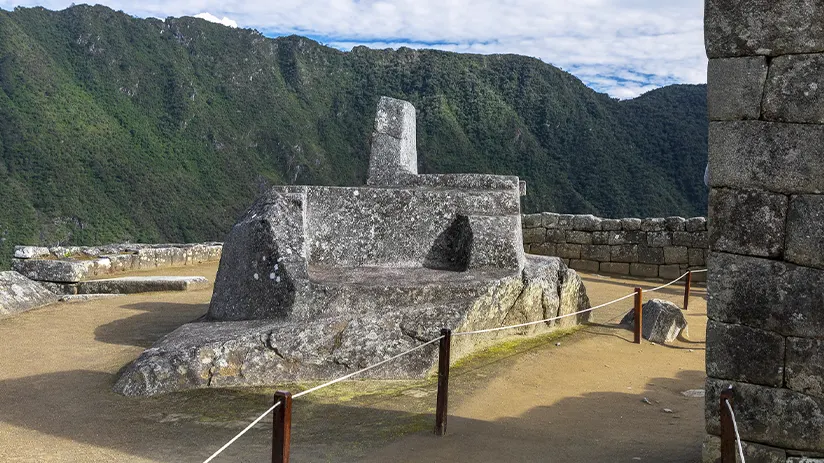
This is one of the best Machu Picchu facts available. Much of the structure may have functioned as a clock, not only as an observatory. The Temple of the Sun, the Intihuatana stone, and the Temple of the Three Windows demonstrate this theory.
These are 3 of the main and most significant structures within the Inca citadel. The Intihuatana stone is a rock with various planes which the Incas polished with great precision. The specialists know it not only as the rock that radiates energy but also as the clock of the citadel. Many have understood that the natural environment of the complex is as important as the buildings themselves.
The scholars believe that the orientation of the surrounding sacred mountains influenced the location of its most significant structures. Also known as Apus.
Therefore, if you are looking for Machu Picchu vacation deals, you must know these facts beforehand.
6. The real constructions of the complex are not in sight
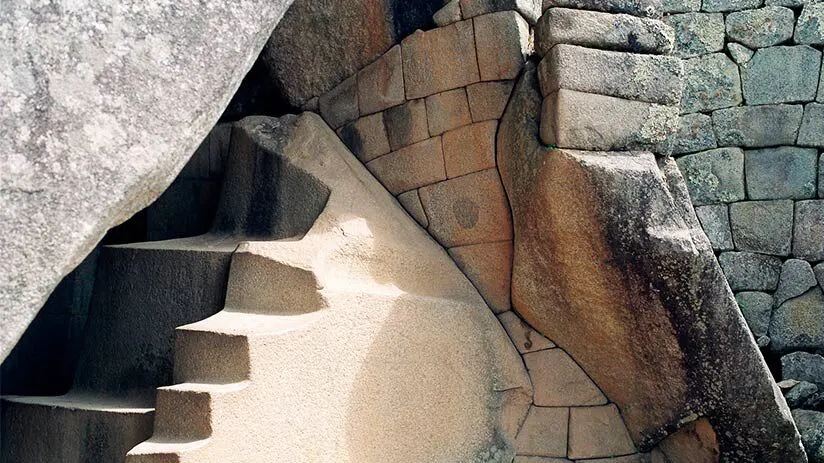
More than 150 buildings, including houses, baths, and even sanctuary houses, make up Machu Picchu. Inside the Inca citadel, you can find different buildings and constructions. Many of these were for ceremonial and religious purposes, but there are many for storage purposes as well. If you are planning a trip to Peru, you cannot miss this wonderful resort.
Although everybody remembers the Incas for their incredible constructions, their civil engineering projects were quite advanced for the time. Let it surprise you to know that the Incas built the citadel on a fault between two peaks.
The Andean people sculpted the site, by moving stone and earth to create the flat space. Specialists believe that the Incas did most of the construction underground. Because the different foundations and the drainage channels that work.
7. The routes of the Incas rivaled the routes of Rome
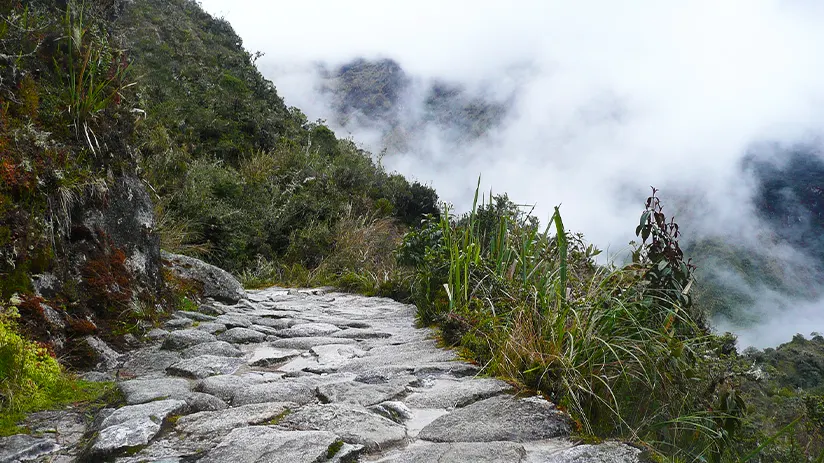
The roads and trails built by the Incas rivaled those of Rome. They built more than 40,000 kilometers of paved roads, bridges, and other types of trails. The road system built by the Incas linked the important cities of the royal estate of Tawantinsuyo.
All the roads of the road network also led to the capital, Cusco. These routes were part of the popular Inca Trail, one of the different ways to get to Machu Picchu. This road network was the most extensive and advanced transportation system in South America during pre-Columbian times. Many of these cobbled routes are still intact to this day.
8. It was not the true “Lost City of the Incas”
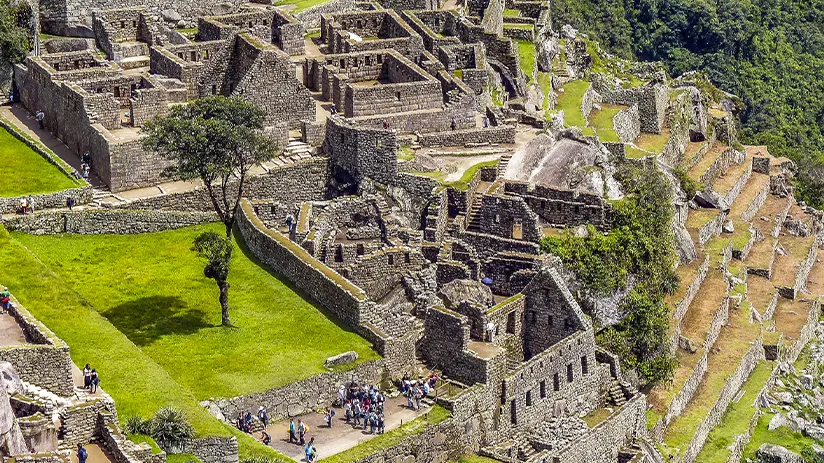
When the American explorer came across Machu Picchu in 1911, he was looking for a different city. Originally, explorer Hiram Bingham thought he had found the lost city of Vilcabamba. This was a hidden Inca capital to which the Andean people had escaped after the arrival of the conquerors.
Now, scholars believe that the Incas built the real Vilcabamba in the jungle, a few miles away from Machu Picchu. Upon encountering the Machu Picchu, Hiram Bingham thought he was in Vilcabamba, the last refuge of the Incas.
Therefore, his most famous book received the name “The Incas Lost City”. But in reality, he had come across one of the most amazing Inca architectural gems, Machu Picchu, NOT Vilcabamba. Thanks to its discovery, today, we can enjoy this unique attraction.
9. Machu Picchu, a town of only women
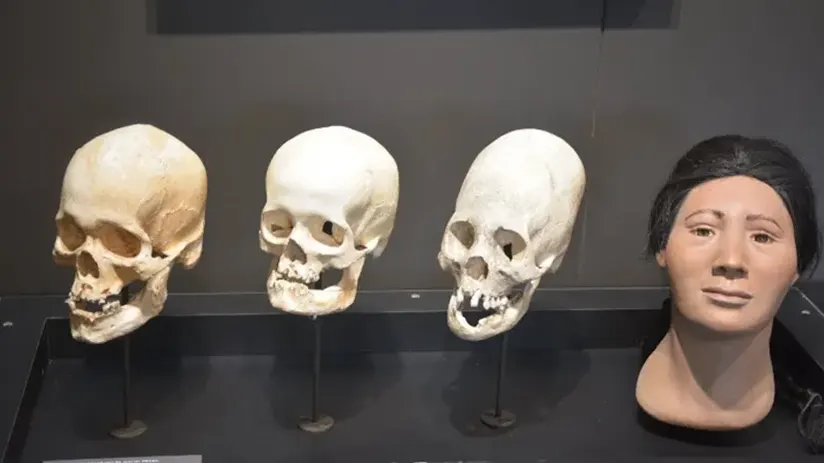
Once Hiram Bingham arrived at Machu Picchu in 1911, he spent a good time admiring its beauty before excavating. He searched remains of pottery, jewelry, and evidence of Inca occupation at the site.
Among Machu Picchu facts found in 1912, one of them could be the answer to the eternal question: What is Machu Picchu? Well, they unearthed many skeletons belonging to women. Immediately, Hiram Bingham concluded that Machu Picchu had been a sanctuary for “Virgins of the Sun”. They were an exclusive Inca woman elite dedicated to the Sun and its son (The Inca) adoration.
However, in recent years, new studies revealed that the bones belonged to both genders, males and females. For this reason, scholars believe that the Incas used Machu Picchu as a retirement site.
10. The newly discovered tomb
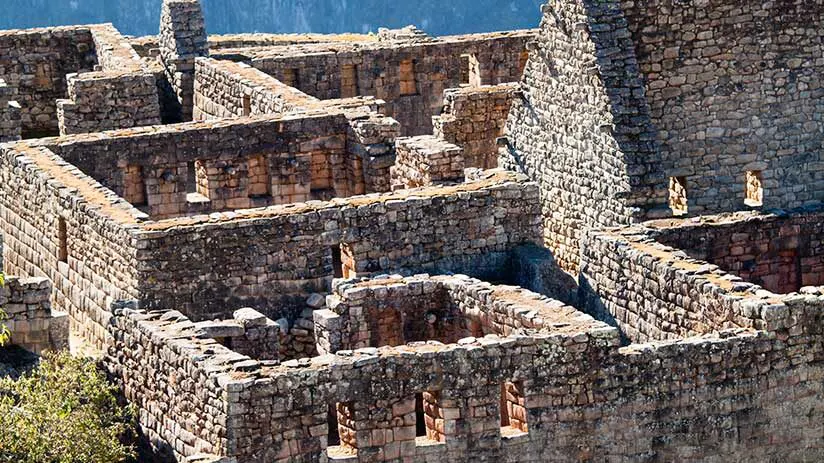
In 2010, among other tourists, the French David Crespy had to stay in Machu Picchu for three days. A torrential rainstorm caught him, and it washed away the train rails, his only way out of Machu Picchu to Cusco.
In this sense, he had enough time to take walks by the citadel. During his walk, he could pay attention to a cave located below an important Inca temple. It was clear it was the door to something very essential that had been abruptly covered. At this moment, he didn’t know that his sighting could answer one of the most unresolved mysteries of Machu Picchu.
Perhaps the Inca Pachacutec Tomb? Scholars knew that the Incas buried the great Inca emperor there. Maybe during an escape?
Either way, he told his hypothesis to other local and French archeologists. Of course, one of them, another French named Thierry Jamin made available his geo-radar. This was to confirm if the walled door concealed some stairs leading to secret Inca chambers.
Happily, the scholars confirmed the hypothesis. But, there was no time to celebrate. They wanted to continue with the research, unlocking the cave of those giant stones. But the Peruvian government opposed it.
The government alluded to a lack of scientific support to carry out an unearthing inside the Inca citadel. One of the interesting facts about Machu Picchu may still be unknown until new studies confirm the French theory. This could lead to another exciting discovery, similar to when Hiram Bingham first found the site.
11. An earthquake-proof Inca citadel
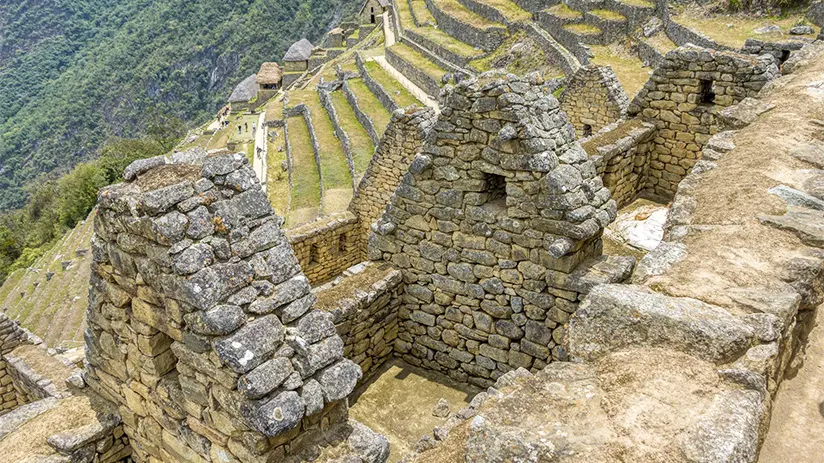
Another of the most surprising facts about Machu Picchu is its anti-seismic structure. The Incas built every Machu Picchu building to be earthquake-proof. In contrast to the fact that the area of Peru is quite susceptible to earthquakes.
The Cusco people said that while earthquakes occur, the Machu Picchu stones “dance.” Furthermore, the Incas built Machu Picchu near two faults. And knowing this, the Incas relied on different construction techniques to make their buildings much better. These included the aforementioned ashlar technique, as well as trapezoidal-shaped doors and windows.
12. Machu Picchu’s altitude is lower than Cusco city
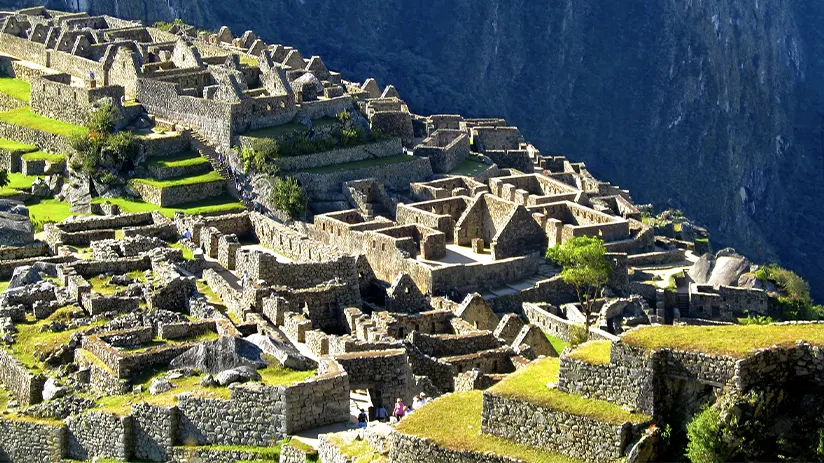
If you look at the Machu Picchu map, you will realize that Machu Picchu is lower than Cusco. The capital of the Incas’ empire lasts above 11152 feet above sea level. Instead, Machu Picchu is around 7973 feet above sea level.
Cusco is in the Andes mountains region of Peru and has cold, dry weather most of the year. On the other hand, Machu Picchu is in the Peruvian jungle and has hot, humid weather.
This Machu Picchu fact will be very important in your planning Peru trip.
13. The Spanish never reached it, and even better, they never dismantled it
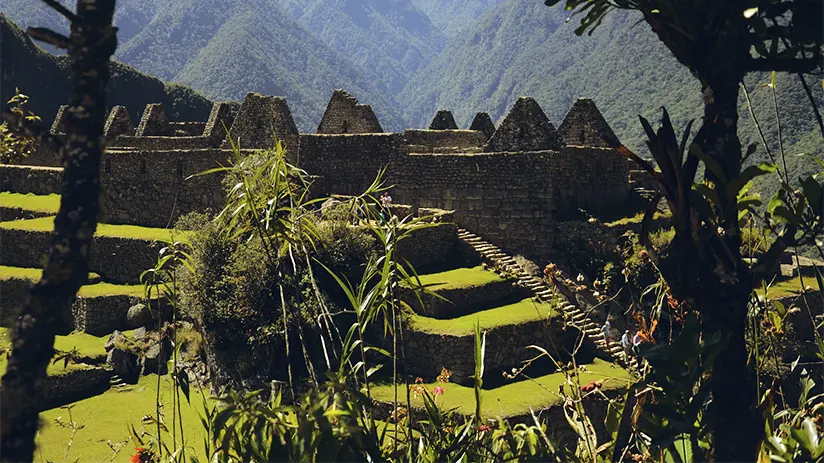
One of the most surprising Machu Picchu facts is that the Spanish conquerors never reached Machu Picchu. Despite they knew about its location. In addition, after the different invasions, the Incas fled to other regions.
The Scholars believe that one of these places was Vilcabamba. Hiram Bingham was truly looking for this city when he came across Machu Picchu. Therefore, 80% of its structure remains today. Historians know that the Spanish dismantled the Inca religious buildings to build over them Catholic churches.
Thus, they wanted to impose the Catholic over the pagans. However, this purpose was not fulfilled in the Machu Picchu case.
To check this, you can take our many Machu Picchu tours. Thanks to its strategic location, the Spanish never reached the Inca complex. But this does not mean that the Incas have hidden the citadel. Many locals knew of its existence.
Several Quechua farmers were cultivating the different terraces when Bingham appeared in 1911.
14. Its use and repentant abandonment
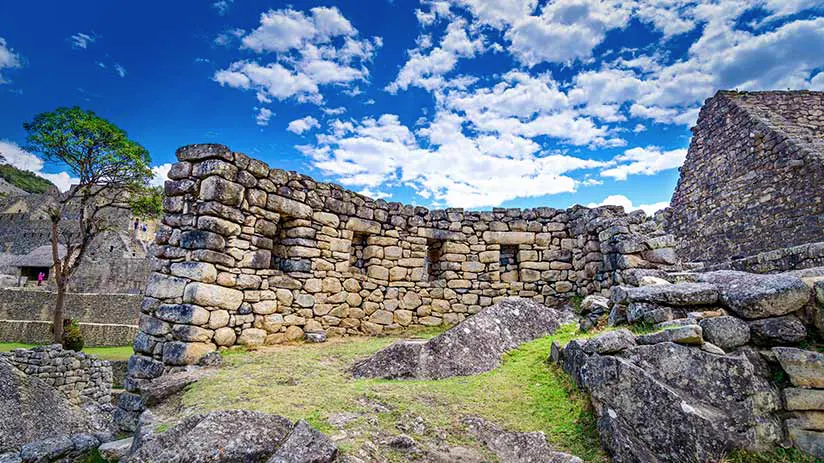
As for the function of Machu Picchu, it continues to be the subject of many debates. Archaeologists believe that the Incas used Machu Picchu as an ancient observatory. The sacred structure, known as Intihuatana, is evidence of this.
This indicated when the two equinoxes of the year occurred. However other theories suggest that it functioned as a sacred place of worship. While others mention the functionality like agricultural sector, a fortress, and a place of pilgrimage, among other things.
Some other theories suggest that the journey to Machu Picchu from Cusco may have had a ceremonial purpose. Since instead of following the most sensible path to the banks of the Urubamba River, the Incas built the Inca Trail.
This one is impractical but visually unparalleled. Specialist believe that the Incas preparer the pilgrims for their magical entrance of the citadel in thus form. Without a doubt, it is one of the most interesting Machu Picchu facts that we can consider.
The reason for the abandonment remains a mystery to historians. Over time, the resident and few people forgotten and only the locals knew its location. The Inca abandoned Machu Picchu around the year 1535, even without finishing some of its constructions. This occurred during a time of great changes in the Empire.
The Inca Empire ended quickly when the conquerors arrived. However, the Incas abandoned Machu Picchu mountain before they got there. Some scholars think that an epidemic happened when the first conquerors introduced smallpox to the area.
Their colleagues then exploited the situation. But without any solid evidence, the real reason remains a total mystery.
15. The ancient land of Tawantinsuyo. Current Argentina, Bolivia, Chile, and Ecuador
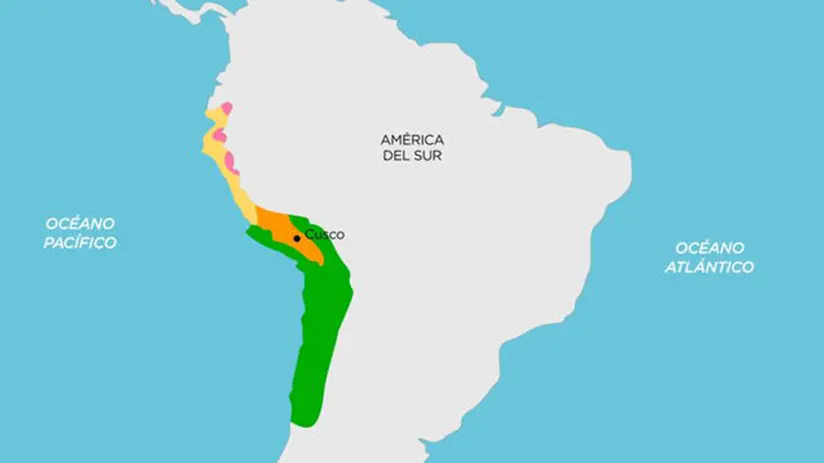
Besides the complex system of land administration, they have high knowledge in construction, architecture, agriculture, inter alia. The extension of its country, named “Tawantinsuyo,” was the real reason to call it the “Royal estate of the Incas” or the “Empire of the Incas.”
The country encompassed the current territories of Colombia, Ecuador, Bolivia, Argentina, Chile, and Peru (the Country sheltered its capital, Cusco). There are more than 2500,000 square kilometers between the Pacific Ocean to the west and the Amazon jungle to the east.
From the Ancasmayo River (Colombia) to the north of the Maule River (Chile). Of course, among the Machu Picchu facts, the Tawantinsuyo and its extension deserved to be on this list.
16. The administration forbid the overflying Machu Picchu to Helicopters and any airship
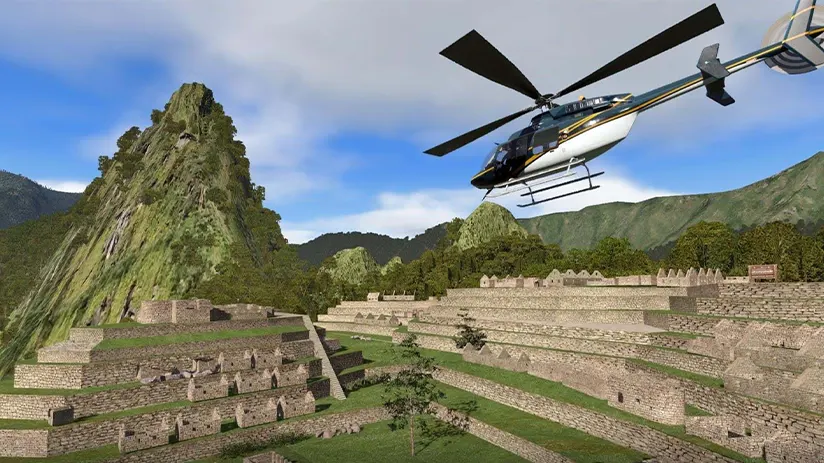
In the 1990s, there were different ways to get to Machu Picchu. You could hike, take a train to Machu Picchu, or even fly in a helicopter. Just flying in a helicopter was an option more for reaching the Inca citadel. The journey could last only 1 hour and a half.
In this form, the visitor could take advantage of their time visiting Machupicchu in less than a day. But there is a problem: the acoustic and visual pollution scared away the endemic animals in the area. In addition, this harmed the development of the area.
Therefore, in 2010 the administration forbid the overflights in Machupicchu in general. Of course, the tourists understand the law, and the spectacled bear and the cock-of-the-rock returned to the area, among other species.
17. Special permission to use a Drone
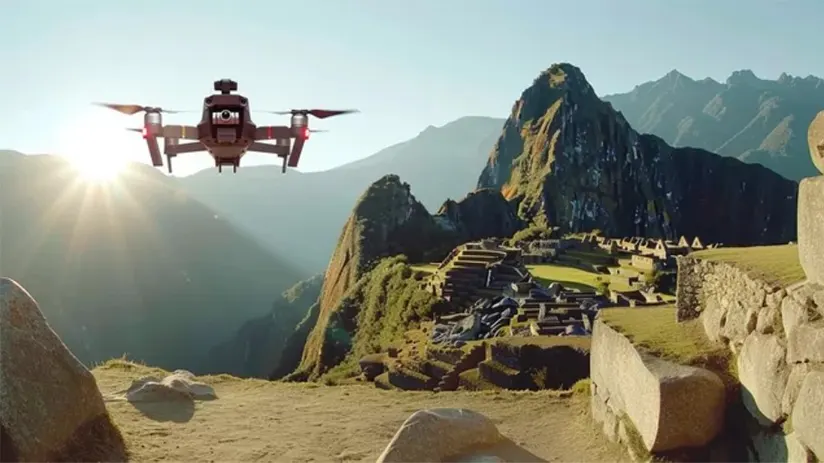
Are you one of those who like to take the most spectacular views of your trip with a drone? Well, during your planning a trip to Machu Picchu, note that the administration restricts its use. The only ones who can use them are marketing professionals and advertising or cinematographic production teams.
Therefore, to use one, you will have to show an application letter. In there, you’ll indicate the day and time of filming, and a small script detailing the places that will appear in the film. Besides a receipt of payment for filming use tax and a list of the materials that your fil will need. These can be cameras and drones, among others.
I forgot you’ll have to present this documentation at least a couple of months in advance of the visit. As you see, among Machu Picchu facts, this is more advice than a fact. Therefore, we recommend you carry your phone and practice your photography class in Machu Picchu.
18. In Machu Picchu, llamas are foreign like anyone
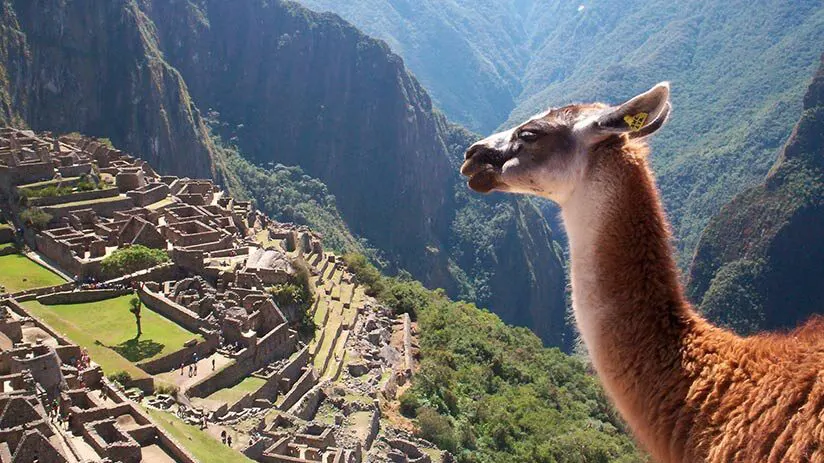
As we mentioned in previous Machu Picchu facts, the Inca citadel is in the Peruvian eyebrow jungle. It has humid and hot weather with precipitations most of the year. This is not a natural environment for those animals that live over 13000 feet above sea level.
In this specific case, we discuss the llamas. But, how were they getting there? Well, the Incas took him with them as draft animals since Machu Picchu construction, around 1400 AC. Even the administration brought the grass that llama eats from the highlands of the Andean.
Nowadays, you can find them wandering, resting, or eating in cleared areas of Machu Picchu. In addition, they will be a part of your Machu Picchu reservations. You will not avoid them!
19. The ancient inhabitant of Machu Picchu, the spectacled bear
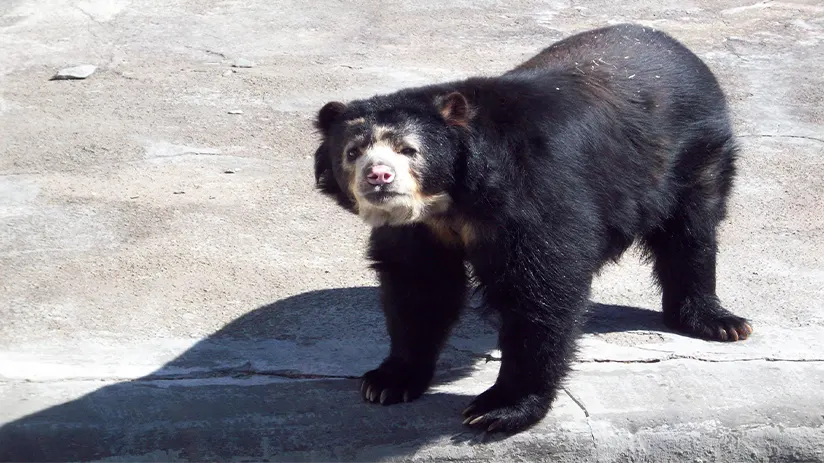
In our list of Machu Picchu facts, the spectacled bear could not miss. This is the unique bear in all of South America! They usually live in cloud rainforests between 250 and 4750 m.a.s.l. The Incas called it “Ukumari.”
They also receive the name spectacled bear because they have white fur that starts from their chest and surrounds their eyes. Its diet consists of 90% fruits, seeds, berries, fruits bromeliads, roots, bark, leaves, and 10% meat, fish and insects, and carrion. Of course, Machu Picchu is in an archeological park that includes large natural and green areas surrounding the Citadel.
In these areas live the spectacled bear. Even when they realize that there is no crowd in Machu Picchu, they can enter and take a walk through the citadel. If you visit Machu Picchu and are lucky to find them, don’t panic; they are accustomed to human presence.
20. Agustin Lizarraga, a Peruvian discoverer before Hiram Bingham
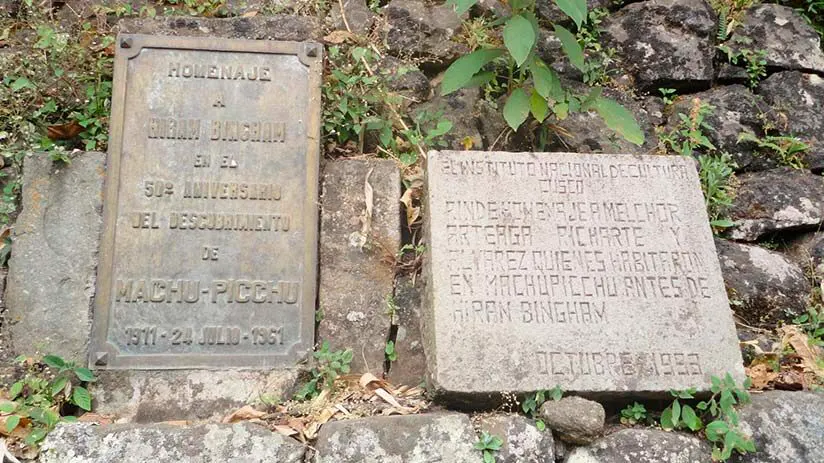
Everybody knows explorer Hiram Bingham as the discoverer of Machu Picchu. The American explorer reached the Incas’ citadel on July 24, 1911. However, few know that when Bingham arrived there, he found an inscription. “Lizarraga 1902,” said the vegetable charcoal inscription in the upper part of one of “The 3 Windows Temple”.
Of course, Bingham mentioned this fact in the first editions of Bingham’s book “The Lost City of the Incas.” However, in later editions, he gradually hid this fact until nothing remained of it.
But, Who was Agustin Lizarraga? Well, he was a humble Cusco native farmer who worked in the lands of the Collpani ranch, owned by the Ochoa family. On July 14, 1902, he and other Collpani workers went out in search of new land for cultivation. They walked for several hours through the undergrowth until they reached unknown ruins.
Then, Agustin Lizarraga wrote his name and the year of discovery over a wall of that ancient city. Unfortunately, he tried to return to the old citadel for more information. However, he died while attempting to cross the Urubamba River. This is one of the most amazing Machu Picchu facts that we could not omit.
21. The controversy between Yale University and the Peru Government
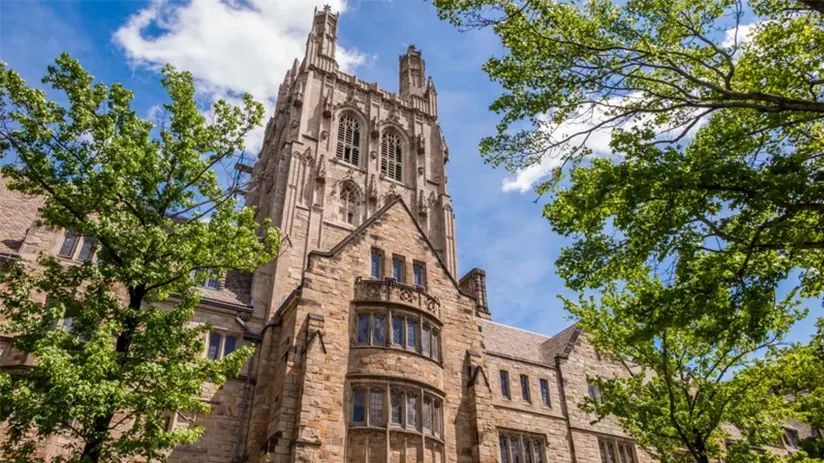
In 1911, Hiram Bingham traveled to Peru to search for the Lost City of the Incas Vilcabamba. He received assistance from his wife, the National Geographic Society, and Yale University. A year before, he couldn’t achieve his goal. When he discovered Machu Picchu, he began excavating Inca artifacts.
Of course, he realized that he’d have to send the artifacts to Yale University for further study. In this sense, Bingham transferred these objects to the USA. A supreme resolution of Peruvian President Augusto B. Leguía between 1912 and 1916 permitted this exportation of Inca objects.
The supreme resolution stipulated that the objects had to return to Peru for exhibition after a short period. Yale University didn’t fill in this fact.
In this sense, the Peruvian government started a lawsuit against Yale University in the Federal District Court of Connecticut. The lawsuit reached conciliation, and Yale University undertook the return of all the Inca pieces. These were more than 35000 pieces. The university returned the pieces for two years, from 2010 until 2012.
In this form, Peru recovered pieces of its history and tradition. Nowadays, you can see these archaeological treasures in Peru, in the “Concha Museum” of Cusco.
22. The families who claimed to own Machu Picchu for many years
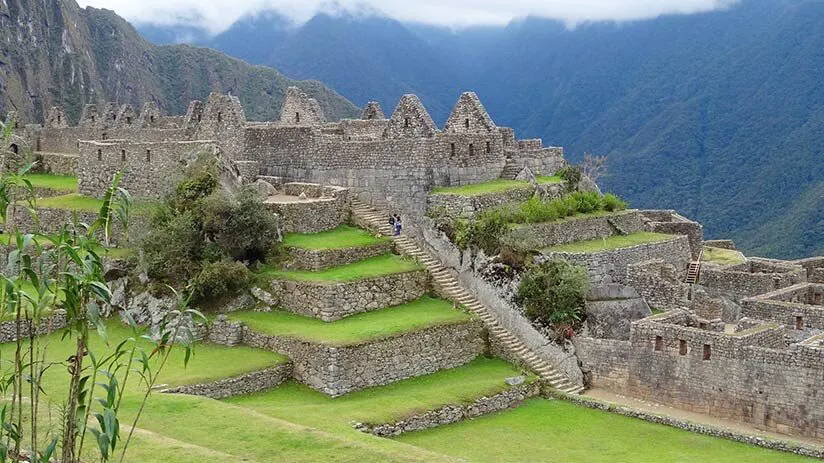
Among Machu Picchu facts, this can be the most particular. Two Cusquenian local families claimed to own Machu Picchu for many years. The Abrill and the Zavaleta families. This story started when Mariano Ignacio Ferro bought the land where is Machu Picchu.
He purchased it from the Nadal family between 1904 and 1910. He even helped Bingham on his journey to Machu Picchu. The years passed, and he left these lands as an inheritance to his daughter Tomasa, who married a lawyer named Abrill. Abrill began a claim against the Peruvian government to get an indemnity for the lands.
The government ignored his claims, so Abrill decided to sell 20% of the land to another family, the Zavaleta.
In 2003, both families began a lawsuit against the Peruvian government to get 100 million dollars as indemnity. They requested this indemnity for the use of the land for years for tourism activity. However, they lost. In this form, the claim of both families comes to be an interesting history for the visitors of Machu Picchu.
23. You can not visit Machu Picchu without a tour guide
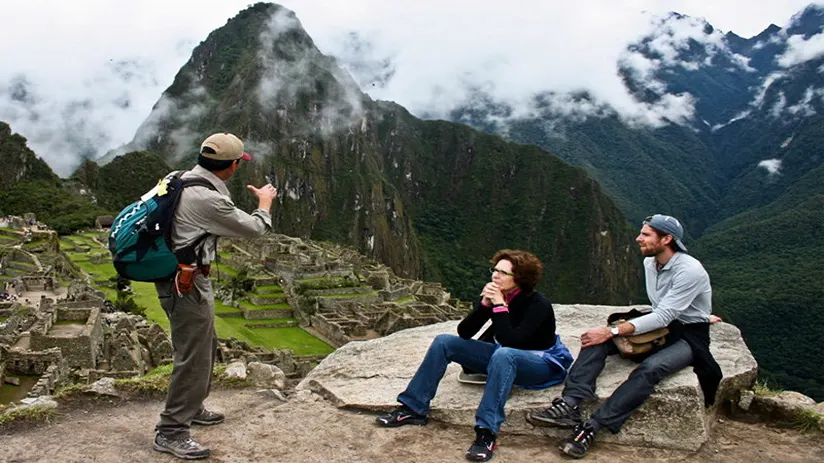
The rules of the Peruvian Culture Ministry forbid entrance to Machu Picchu without a guide. But, Why? Because the government wants to improve the development of tourism careers at local universities and institutes. Therefore, If you already have your Machu Picchu tickets, it is not enough.
You will have to hire a tour guide service. Happily, there are two forms to get, either through a travel agency or directly when you are at the same Machu Picchu entrance. Many local tour guides prowl this area. The decision is yours.
Our recommendation? The security and guarantee of a travel agency.
24. You can get your passport stamped in the Inca citadel
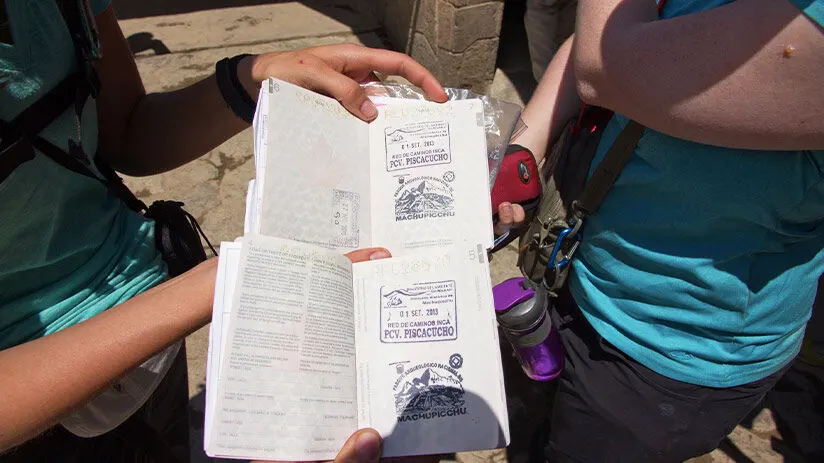
One of the things to remember is that you can stamp your passport at the entrance. You can enjoy various stamps on your passport within Peru. Lima airport will be the starting point of your adventure! An additional note, the Lima to Machu Picchu distance is around 5 to 6 hours.
Of course, we are considering a local flight from Lima to Cusco, then a mix of trains and road transport. You can also get your passport stamped whether you are coming from the Inca Trail or from the same train to Machu Picchu. It is one of the best ways to remember your magical trip to the citadel.
You only have to see a person behind a green table. He is usually on the side of the exit door of Machu Picchu Archaeological Park. There, you can get your passport stamped.
25. Only two ways to get there
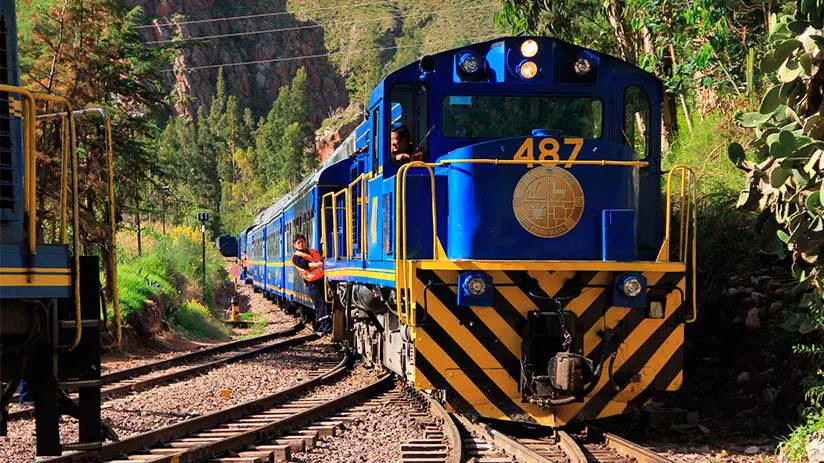
There are two possible ways to go to the archaeological complex. Via train or through the incredible Inca Trail. If you choose the Inca Trail, you will end your adventure at the Sun Gate in Machu Picchu. On the other hand, if you opt for the train, you can take it from the train stations of Cusco or Sacred Valley, and you will arrive at the small town of Aguas Calientes.
Thus, we suggest booking your Machu Picchu tickets early because they sell out fast. Whichever way you decide to get to the citadel, you will have a unique experience ahead of you.
“THE BIGGEST RISK IN LIFE, IS NOT TAKING ONE”
We believe that the different Machu Picchu facts are best appreciated with a guided tour inside the wonderful complex. You will be delighted with everything that you will have at your disposal. We hope, together with Machu Travel Peru, to have quenched your curiosity regarding the most important park of the Peruvian archaeological sites.
Still, there is much that is unknown about the Inca citadel. We hope this has encouraged your future travel plans. If you have any questions or queries, you can contact our team of qualified advisors.
